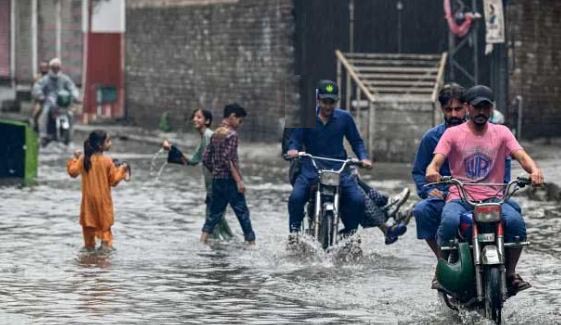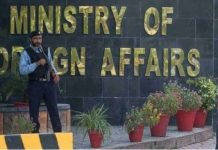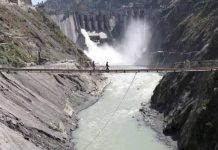ISLAMABAD, AUG 3: At least 299 people, including 140 children, have lost their lives, and 715 others have been injured in flash floods and torrential rains that have swept through vulnerable areas of the country since June 26, according to the latest statistics issued by the National Disaster Management Authority (NDMA).
The death toll also included 102 men and 57 women, according to the data.
Among 715 injured, 239 were children, 204 were women, and 272 were men who sustained injuries.
Since June 26, flash floods and torrential rains have caused widespread destruction, damaging a total of 1,676 houses across the affected areas.
Of these, 562 homes were completely destroyed, while 1,114 sustained partial damage. The severe weather also led to the loss of 428 livestock, compounding the impact on local communities.
The NDMA has carried out 223 extensive rescue operations, successfully evacuating 2,880 individuals from flood-hit regions.
To support affected communities, the authority has distributed 13,466 relief items in vulnerable areas.
These include 1,999 tents, 61 ration bags, 958 blankets, 569 quilts, 613 mattresses, 1,282 kitchen sets, 1,163 food packs, 350 life jackets, 1,122 Hygiene home kits, 2,170 tarpaulins and 146 de-watering pumps along with other essential supplies.
Authorities have established 71 medical camps, treating 577 people so far.
According to the NDMA, the crisis has affected multiple regions, and joint relief operations are continuing in collaboration with provincial and federal agencies.
Met Office forecasts widespread rains from Aug 4
Widespread heavy rains are forecast to sweep across Pakistan starting tomorrow (Monday), with the country’s weather officials warning of flash floods in low-lying areas as another strong monsoon spell sets in.
The Pakistan Meteorological Department (PMD) said a fresh weather system will bring showers to much of the northern and central regions between August 4 and 7.
Azad Jammu and Kashmir and Gilgit Baltistan are both likely to be hit by this new spell of cloudbursts, the weathermen said.
On the other hand, parts of Khyber Pakhtunkhwa, where strong winds and thunderstorms are also forecast, brace for the impact of this monsoon system.
Punjab, which has so far been worst-hit, and the federal capital, where rains have continued without a let-up, won’t be spared either, as these areas are expected to see torrents through the same spell that is now looming large.
Further south, Sindh and Balochistan could be lashed by rain on August 6, though the activity there may be more scattered.
The Met Office has strongly cautioned that the expected flash floods may lead to overflowing streams, clogged drainage, and flooding in low-lying spots, while local authorities have been asked to prepare accordingly.
So far, the rain-laden systems have largely hit the upper parts of the country, leaving southern Pakistan unusually dry, but that may soon change, according to weather officials.
Starting around August 10, monsoon currents could begin to move southward, with Sindh and surrounding areas possibly seeing more activity by mid-August.
The PMD has also warned that if that pattern holds, the rains may stretch into late September, weeks beyond the season’s typical end in the southern belt.
Due to climate change, weather patterns are shifting, and this year the monsoon may continue until the end of September, instead of mid-September as is typical, as per meteorologists.
Experts noted that monsoon currents have so far had a limited impact on southern Pakistan, where rainfall has been significantly lower than in previous years.
With more rainfall forecast in the coming days, disaster management authorities have strongly advised citizens to take precautions, especially those in flood-prone or low-lying areas.
Monsoon rains are a routine part of South Asia’s climate and are essential for crop irrigation and replenishing water supplies.
However, their adverse impact has worsened in recent years due to rapid urban expansion, poor drainage systems, and more frequent extreme weather events linked to climate change.

















